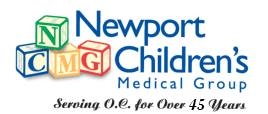If your child has a breathing problem, chronic cough, or hoarse voice and the cause isn’t clear, a flexible bronchoscopy could provide the answers. At Newport Children’s Medical Group, in Newport Beach, Irvine, Costa Mesa, and Laguna Beach, California, the expert pediatric team uses flexible bronchoscopy to provide an accurate diagnosis and in some cases help treat your child’s symptoms. If you’re concerned about your child, call Newport Children’s Medical Group today.
Flexible Bronchoscopy Q & A
What is a flexible bronchoscopy?
Flexible bronchoscopy is a procedure that enables your child’s provider at Newport Children’s Medical Group to see into the air passages in the lungs. Using flexible bronchoscopy ensures your child receives the most accurate diagnosis of their breathing problems.
Bronchoscopes were originally rigid metal instruments that had lighting devices attached to them. New fiber optic technology means bronchoscopes are now flexible, making them much easier for your child to tolerate.
They also have modern video equipment that sends back clear images of your child’s airways to a monitor screen.
What is flexible bronchoscopy used for?
Flexible bronchoscopy has several valuable uses. It enables your child’s provider to see if there’s anything in the airways, such as:
- Foreign bodies
- Tumors
- Inflammation
- Abnormal bleeding
They can take samples of cells and any discharge that might be present in the airways. They can also perform biopsies, where they take small tissue samples for laboratory analysis.
Your child might need to undergo flexible bronchoscopy if they have symptoms like persistent coughing that has no clear cause, hoarseness, or vocal cord problems.
If they’ve had an X-ray that shows anything abnormal in the lungs, flexible bronchoscopy can be useful in seeing the problem in more detail.
There are also therapeutic uses for flexible bronchoscopy. Your child’s provider can use a flexible bronchoscope to remove foreign bodies that have gotten into the airways or a build-up of fluids. There are also advanced uses for flexible bronchoscopy like airway stent placement and photodynamic therapy.
What happens when my child has a flexible bronchoscopy?
You need to make sure your child doesn’t have anything to eat for at least four hours before their flexible bronchoscopy. During the procedure, your provider monitors your child’s blood pressure and heart rate carefully, and they can have oxygen if they need it.
Your provider puts lidocaine onto your child’s vocal cords and larynx, using a spray or a breathing mask. This numbs your child’s throat. The flexible bronchoscope also has lidocaine jelly smeared over it.
The bronchoscope goes up a nostril or into your child’s mouth, down their throat, and into their airways. Your provider can then get a good look at your child’s airways and the bronchi in their lungs. Once they complete the procedure, your child’s provider carefully withdraws the flexible bronchoscope.
If your child has a chronic cough or recurrent breathing difficulties, contact Newport Children’s Medical Group today by phone.
